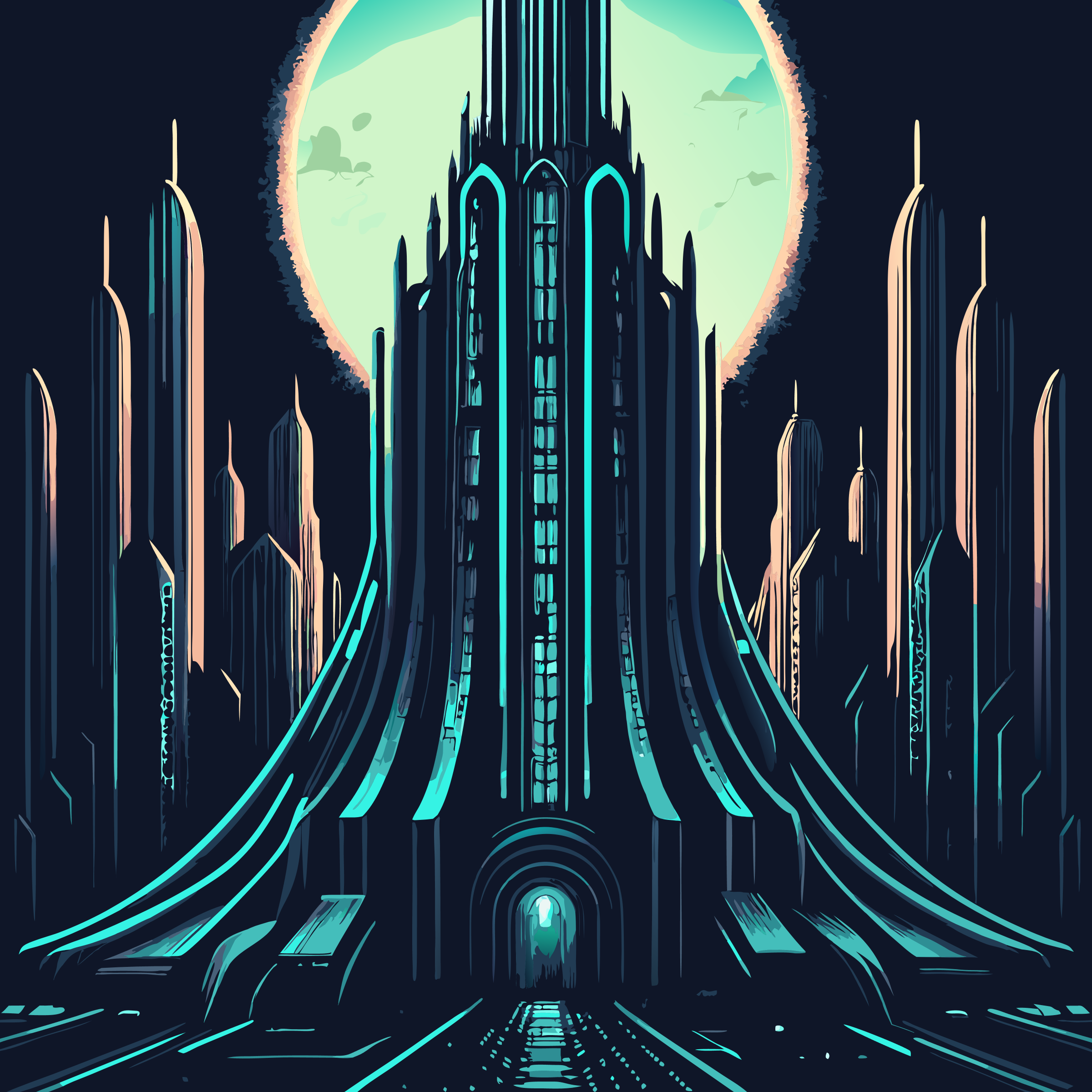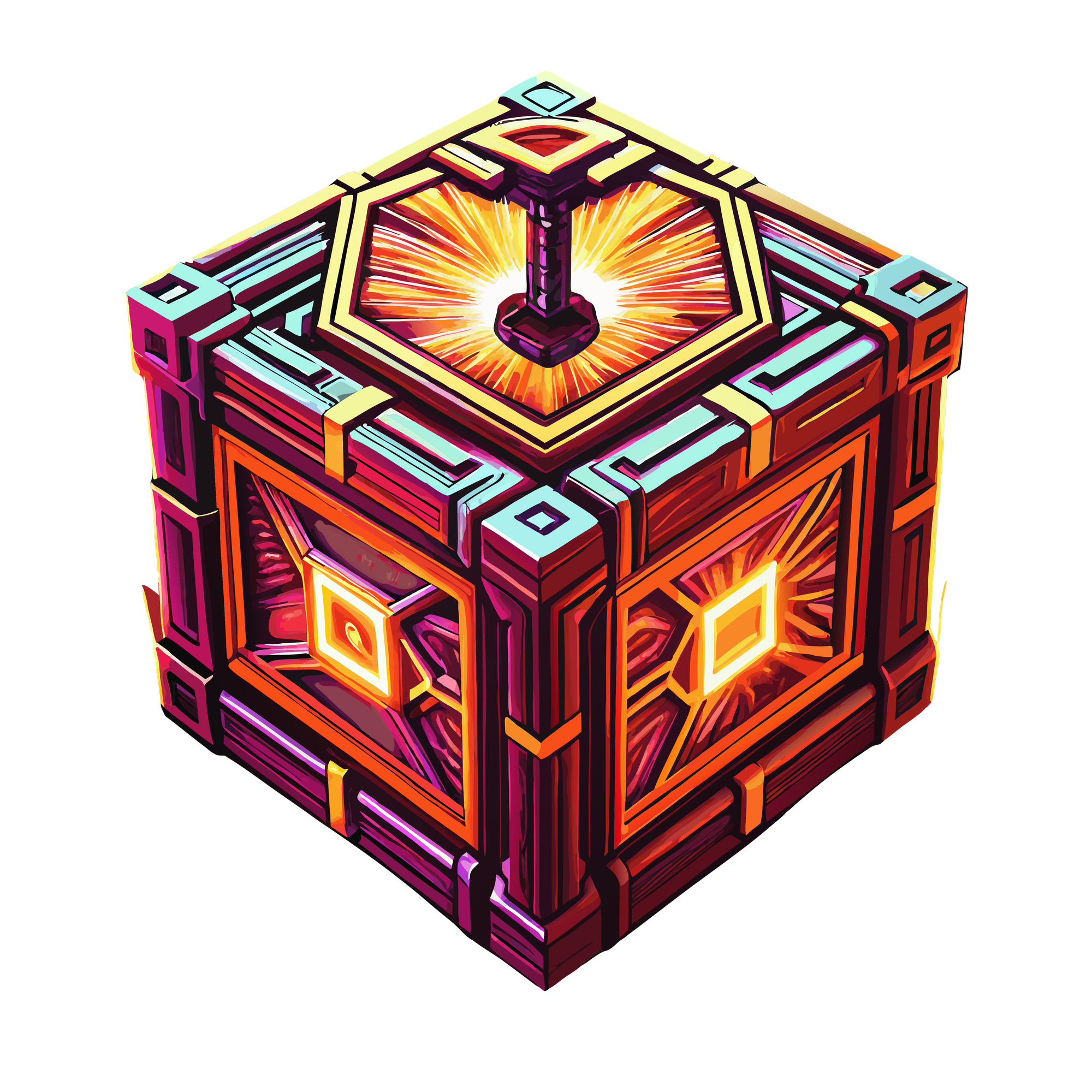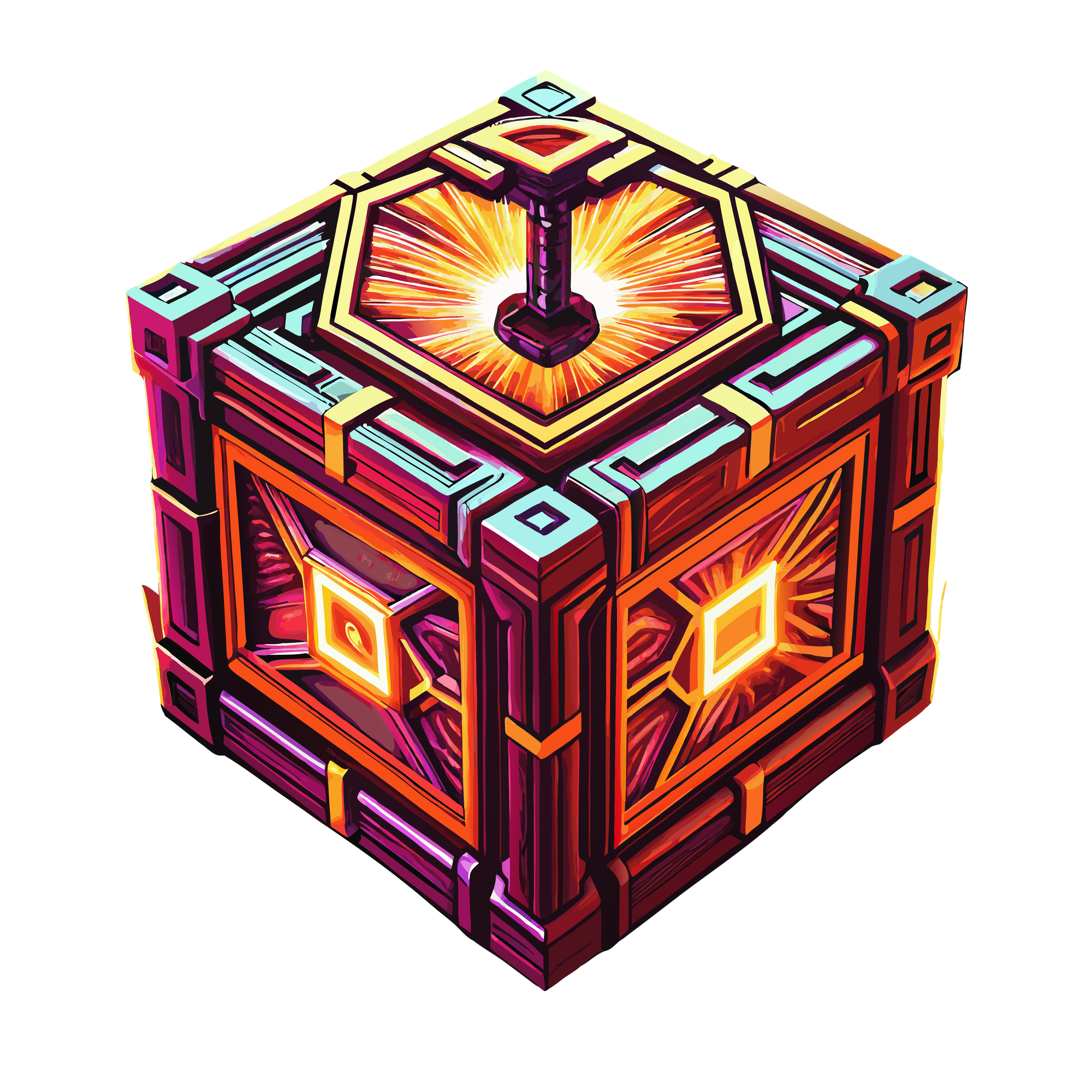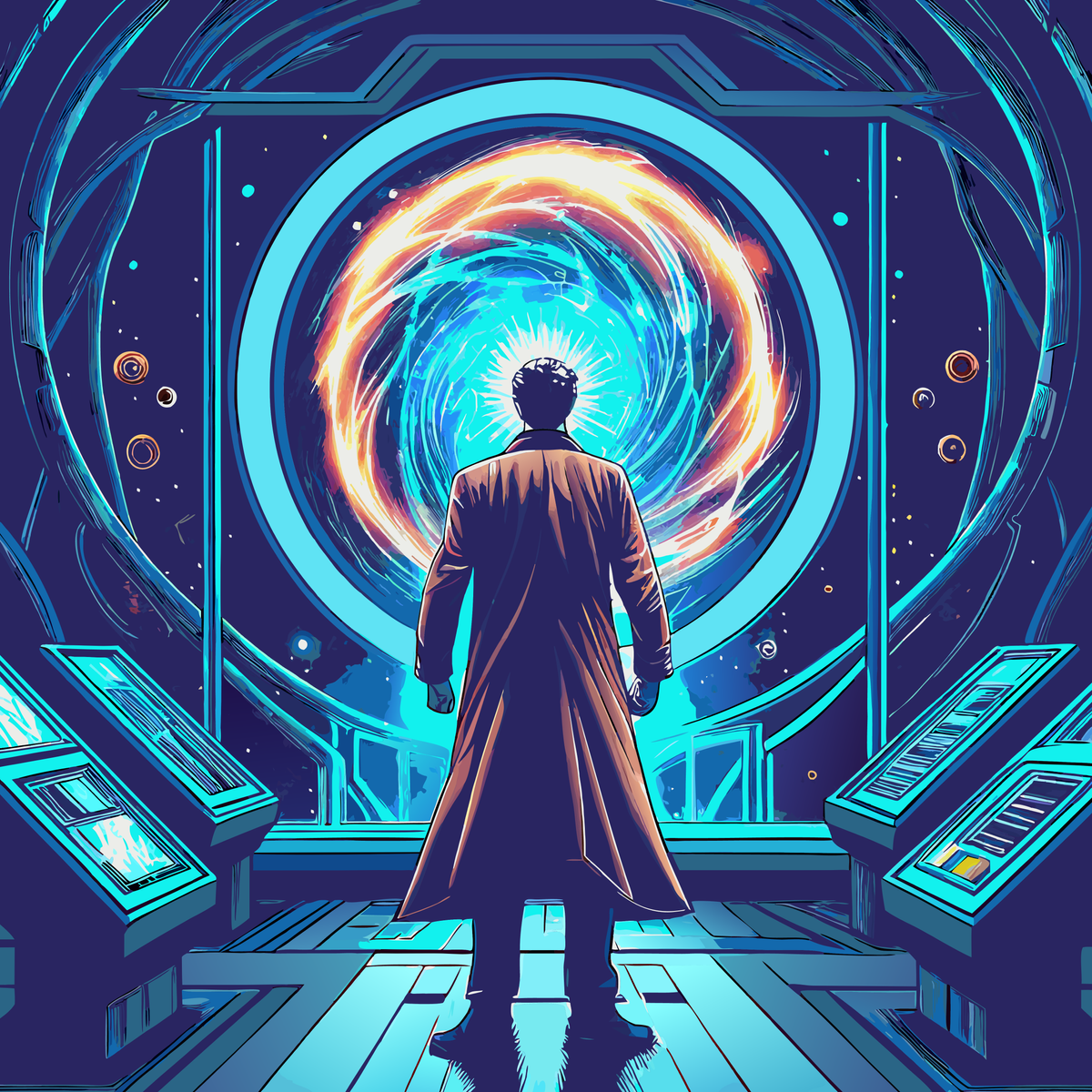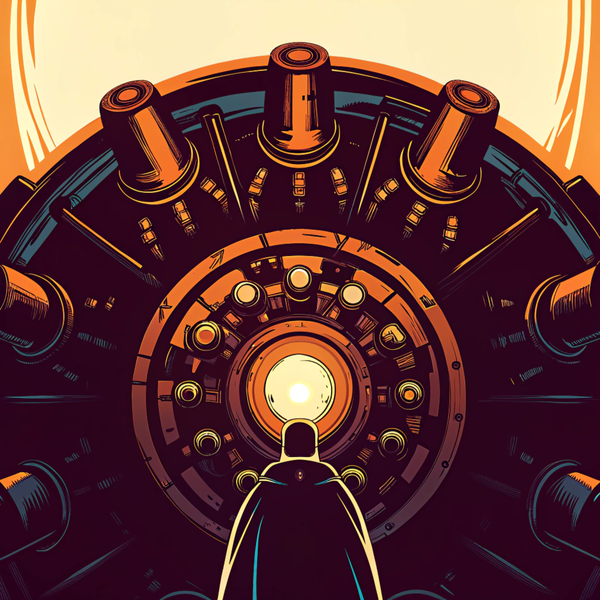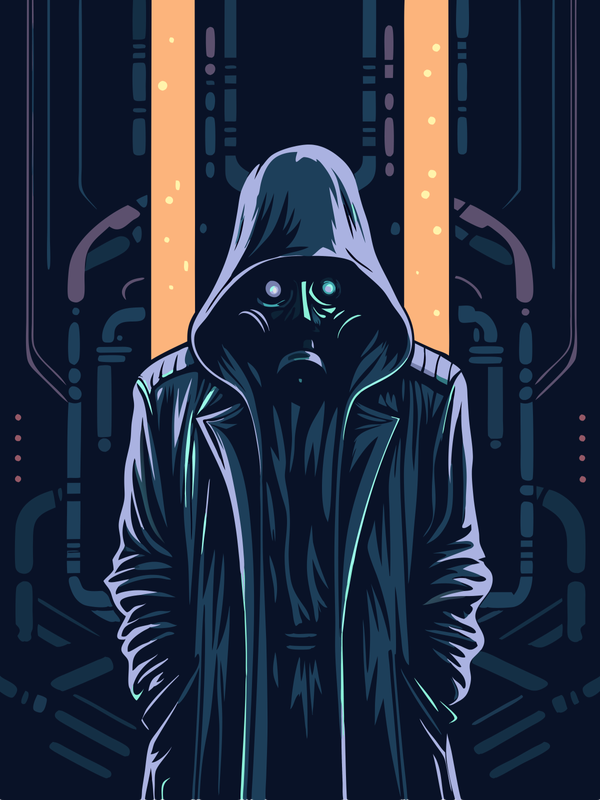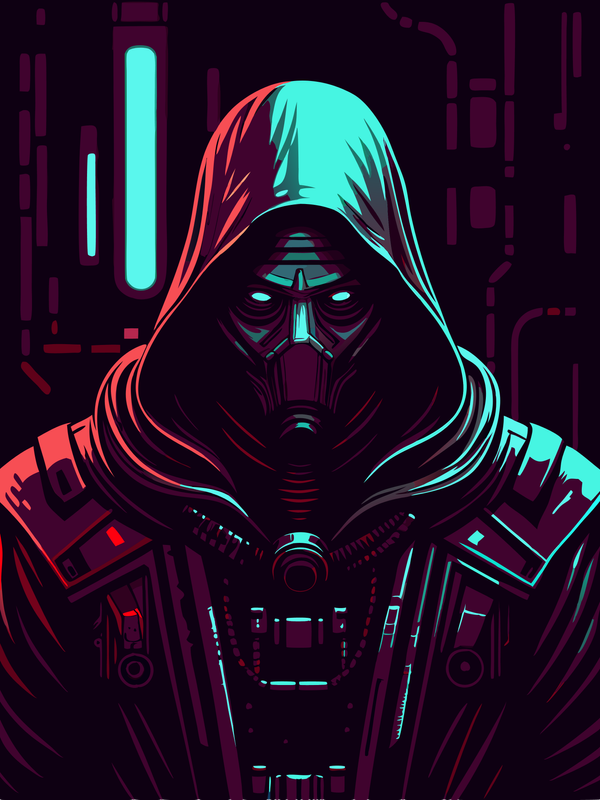“In the halls of The Nexus, power is not merely taken. It is forged, with every ambition, every sacrifice, and every hard-won revelation.” – Fragment from The High Codex
PART I: SEEDS OF WONDER AND DAWNING POTENTIAL
“Genius and compassion—two virtues seldom in balance—coexisted in that boy. For a time.”
— Memoirs of Dr. Celena Ward
The Age of Convergence
Long before he became the looming figurehead of tyranny, Sabian was a child of promise, born during an era the historians of The Nexus would later call The Age of Convergence. It was a storied period defined by extraordinary leaps in both science and technology. The cosmic alignments described therein not only reconfigured the physical world but ignited a transformation in human perception—Nexural energies had seeped into everyday life, opening doors once believed locked by the laws of physics.
From his earliest recollections, Sabian seemed innately tethered to these newly revealed forces. As a toddler, he would spend hours staring at flickering vials of luminescent gel—raw Nexural extracts that absorbed and emitted cosmic energies in mesmerizing patterns. While other children of the time were content chasing digital illusions or tinkering with simple mechanical puzzles, Sabian was already fixated on deciphering the cryptic pulses in the glowing substance.
A Family of Scholarship
Sabian was born to a lineage of academics. His father, Harilan, was a noted historian. His mother, Rhea, was a revered bioengineer whose research had begun bridging the gap between synthetic neural implants and organic brain matter—efforts that would one day heavily influence Sabian’s own breakthroughs.
Growing up in this household, he was nurtured by a steady rhythm of intellectual discourse. Dinner conversations often revolved around the ancient paradoxes of time dilation, or newly discovered anomalies linked to dimension-folding. Books—both digital and traditional—lined every wall, and while his parents encouraged curiosity, they could never have anticipated the voracious appetite their child would have for knowledge that pushed the boundaries of human comprehension.
“From the moment he began to read, he devoured every spreadsheet, every dataset. He showed an almost alarming capacity to connect ideas we adults found difficult.”
— Rhea, personal log

Emergent Brilliance
By the age of twelve, Sabian was no longer content with simply reading about the wonders of the Nexus—he sought to harness them. With scraps of wire and repurposed flux converters from his mother’s lab, he attempted rudimentary experiments designed to detect and measure Nexural waveforms. His improvised apparatus emitted droning hums late into the night. He meticulously recorded each anomaly or frequency spike, convinced that these energies hinted at cures for terminal diseases and solutions for global resource shortages.
This was also the time when he first began to form the bedrock of his personal philosophy: science should serve the collective good. Witnessing his mother’s biotech prototypes successfully stave off degenerative illnesses in local clinics solidified the conviction that knowledge was meant to uplift humanity, not merely elevate a few.
The Librarian’s Discovery
One often-overlooked anecdote from Sabian’s youth occurred when the town librarian, an elderly woman named Elaia, stumbled upon a forgotten text in the restricted archives. Titled Refractions of the Nexus Mind, it was rumored to have been penned by a scholar who once conversed with the earliest manifestations of Nexural energies. Elaia offered the text to Sabian, noticing his exceptional intelligence and unwavering fascination with cosmic phenomena.
Within those weathered pages, Sabian found cryptic references to “the spark of consciousness” dwelling in the energies themselves—a hint that Nexural energies might not be merely inert cosmic byproducts, but something more… alive. This was the first glimmer of the concept that would eventually lead him to the life-altering experiment with Nexos.
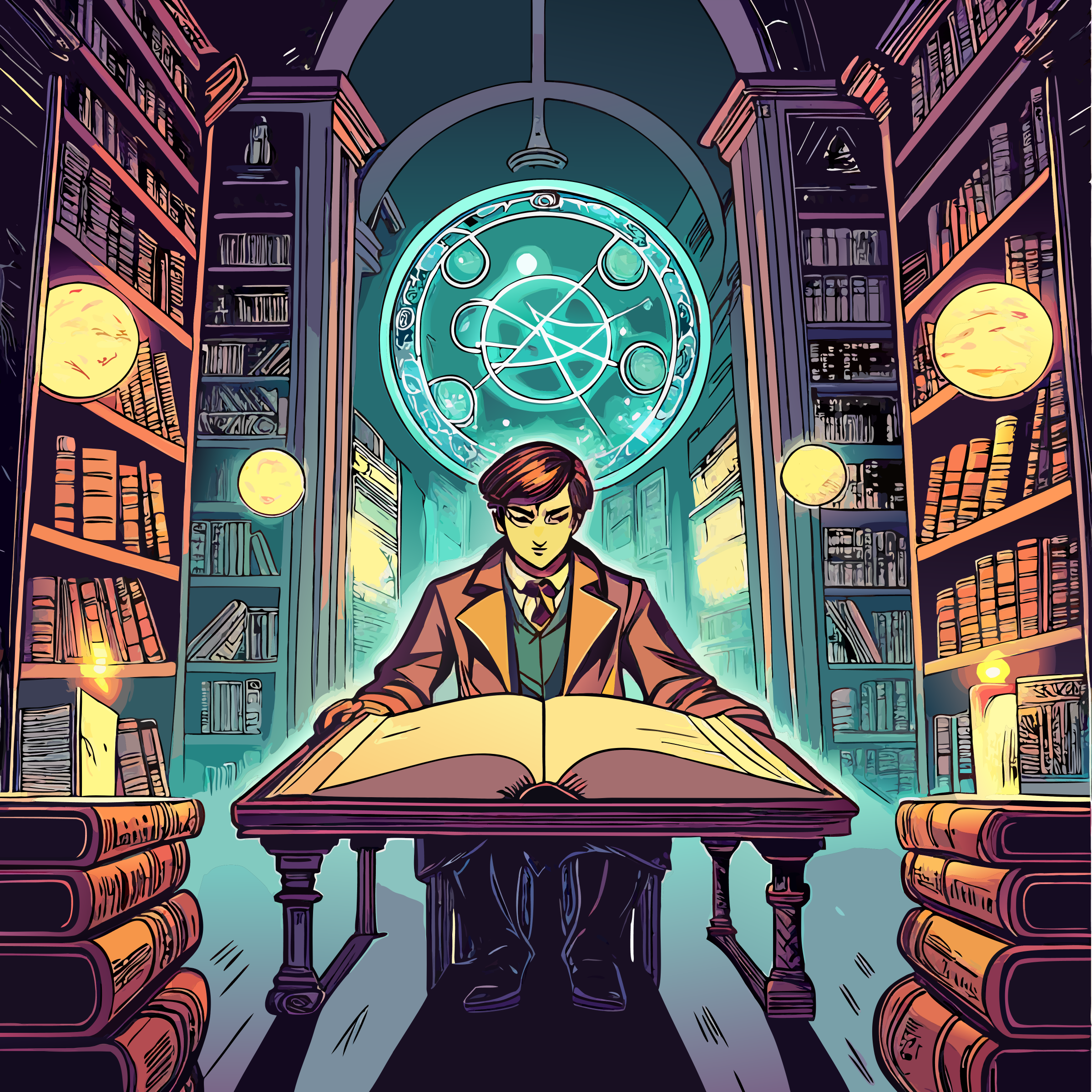
A Child with a Mission
Every evening, after standard coursework ended, Sabian would be confined his makeshift laboratory in the basement of his family’s modest home. Wires dangled from the rafters, neon tubes of Nexural fluid bubbled quietly in stasis chambers, and notes sprawled across the walls charted the correlation between cosmic cycles and certain biochemical reactions in the human body. In these solitary hours, the seeds of wonder took deep root, foreshadowing the unimaginable heights—and depths—this bright young mind would later explore.
“He told me once that if humanity could comprehend the true nature of the Nexus, war, disease, and poverty would be afterthoughts in a new epoch of enlightenment. Only time would reveal how painfully ironic that statement would become.”
— Harilan, father of Sabian
Thus, in these earliest chapters of his life, Sabian established himself as no ordinary boy. The convergence of cosmic phenomenon, intellectual nourishment, and an unshakeable desire to improve the human condition set the stage for a destiny that would lead him to embody both the best and worst of what humanity could become.

PART II: THE NEXUS INSTITUTE AND THE PURSUIT OF HOPE
“Curiosity is often the mother of innovation, but it can also be the spark for cataclysm.”
— Proverb in the High Codex
Scholarships and Stern Tests
By the age of fourteen, Sabian’s accolades and revolutionary experiments had captured the attention of academic institutions far beyond his humble district. One such entity was the Nexus Institute of Advanced Sciences, a sprawling campus located at the heart of the largest megalopolis within the Nexus.
When Sabian applied, his examiners were initially skeptical; after all, the scholarship typically required a rigorous series of collegiate-level tests. Yet the young prodigy breezed through every theoretical exam and outperformed graduate students in practical demonstrations of Nexural wave harnessing. The awarding committee, composed of senior professors renowned for their stringent standards, unanimously agreed that they had never encountered such raw brilliance. Nexalith was promptly offered a full scholarship—complete with access to top-tier labs.
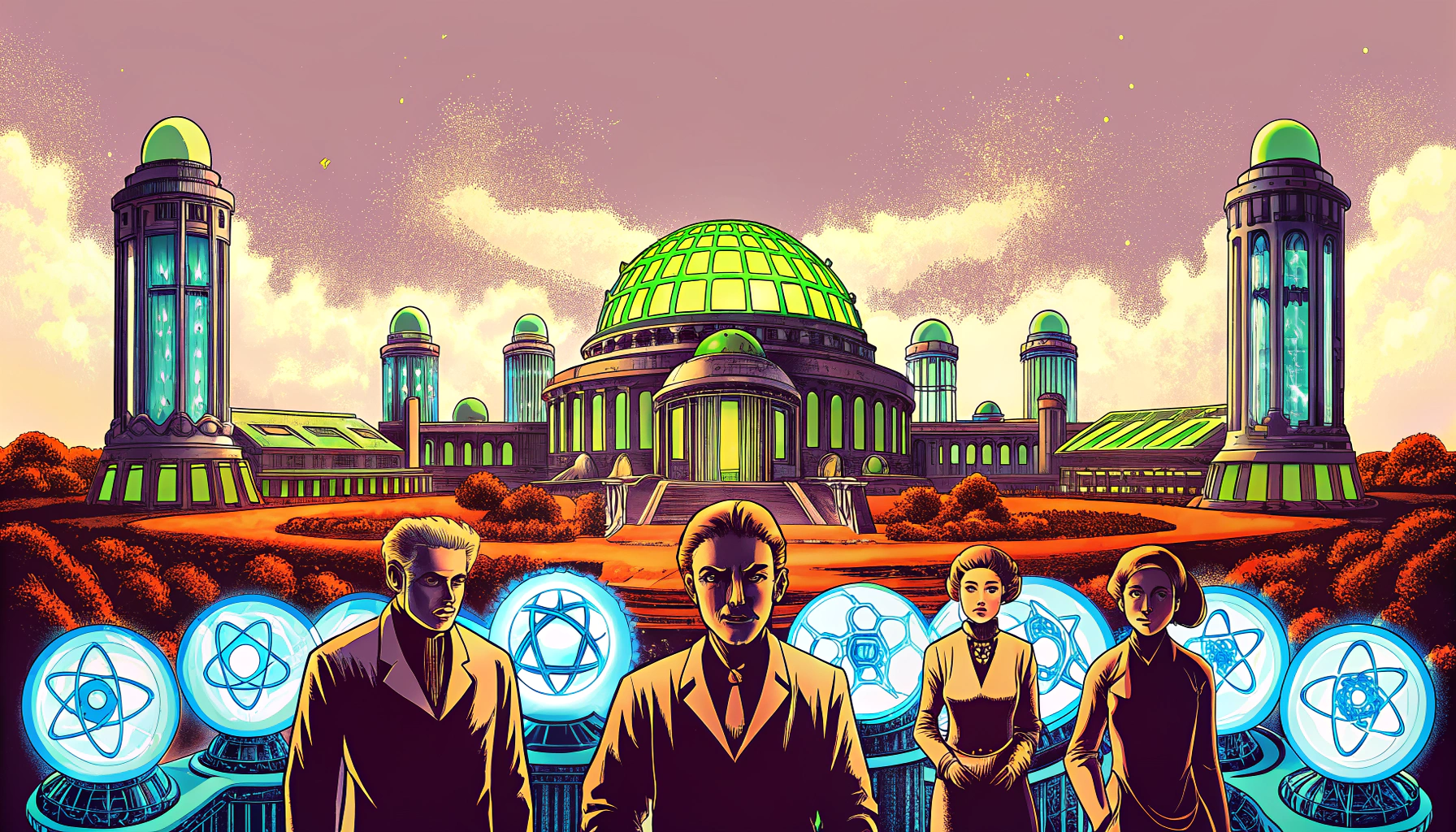
A Haven of Limitless Resources
For the newly enrolled Sabian, stepping onto the campus felt like ascending to an enchanted dominion. Towering libraries flanked by automated archivists lined the main promenade. At the center stood the Galileus Lab, a colossal structure said to contain some of the largest Nexural resonance chambers in existence. Students roamed the manicured gardens discussing everything from trans-dimensional biology to emergent cosmic architecture.
Where others might have been overwhelmed, Sabian thrived. In his first semester, he single-handedly recalibrated a malfunctioning Nexural calibrator that had puzzled multiple senior researchers. The fix took him an afternoon of re-examining old data logs and applying his innate knack for cosmic pattern recognition. That success earned him the respect of influential mentors, including Dr. Celena Ward, who would go on to become the closest thing he had to a guiding conscience.
“Sabian was not just intelligent—he was inspired. He treated science as a moral calling, a path to free mankind from its self-inflicted shadows.”
— Dr. Celena Ward, personal reflection
Scientific Debates and Ethical Quandaries
Despite his achievements, Sabian never fell into the trap of arrogance. He frequented the campus debate halls, participating in fiery philosophical discussions that dissected the ethical implications of tampering with reality’s building blocks. While many saw the Nexural energies as a stepping stone to instantaneous fame or profit, Sabian’s arguments championed a broader perspective: if humanity did not wield these cosmic forces responsibly, it could lead to catastrophic results.
In one particularly memorable debate, a rival student argued that harnessing the Nexus was humanity’s birthright—a means to assert dominance over the cosmos. Sabian countered by insisting that the ultimate goal of harnessing such power should be to heal, uplift, and enlighten, rather than exploit or subjugate. The spirited exchange ended in thunderous applause from the crowd, embodying the respect he garnered for combining intellectual rigor with moral conviction. Something we later would learn is that Sabian drifted immeasurably from this idea.
Practical Altruism
As he advanced in his studies, Sabian began devoting weekends to volunteer work, leveraging his experiments for the betterment of local communities. In the slums adjacent to the Institute’s shining towers, he implemented prototypes of a Nexural purifier capable of filtering heavily polluted water. Rumors spread of entire districts benefiting from his innovations—infants recovering from waterborne illnesses, family-run farms revitalized by stable irrigation, and local clinics reporting a drop in chronic disease rates.
This period marked the height of Sabian’s idealism. The more he saw the tangible improvements his research could bring, the stronger his resolve to push the boundaries further. He firmly believed that with the right combination of innovative spirit and ethical stewardship, technology could rescue humanity from centuries of scarcity and conflict.
“Every equation I solve means another family can drink clean water, another child can live to see tomorrow.”
— Sabian, speech at the Institute’s charity forum
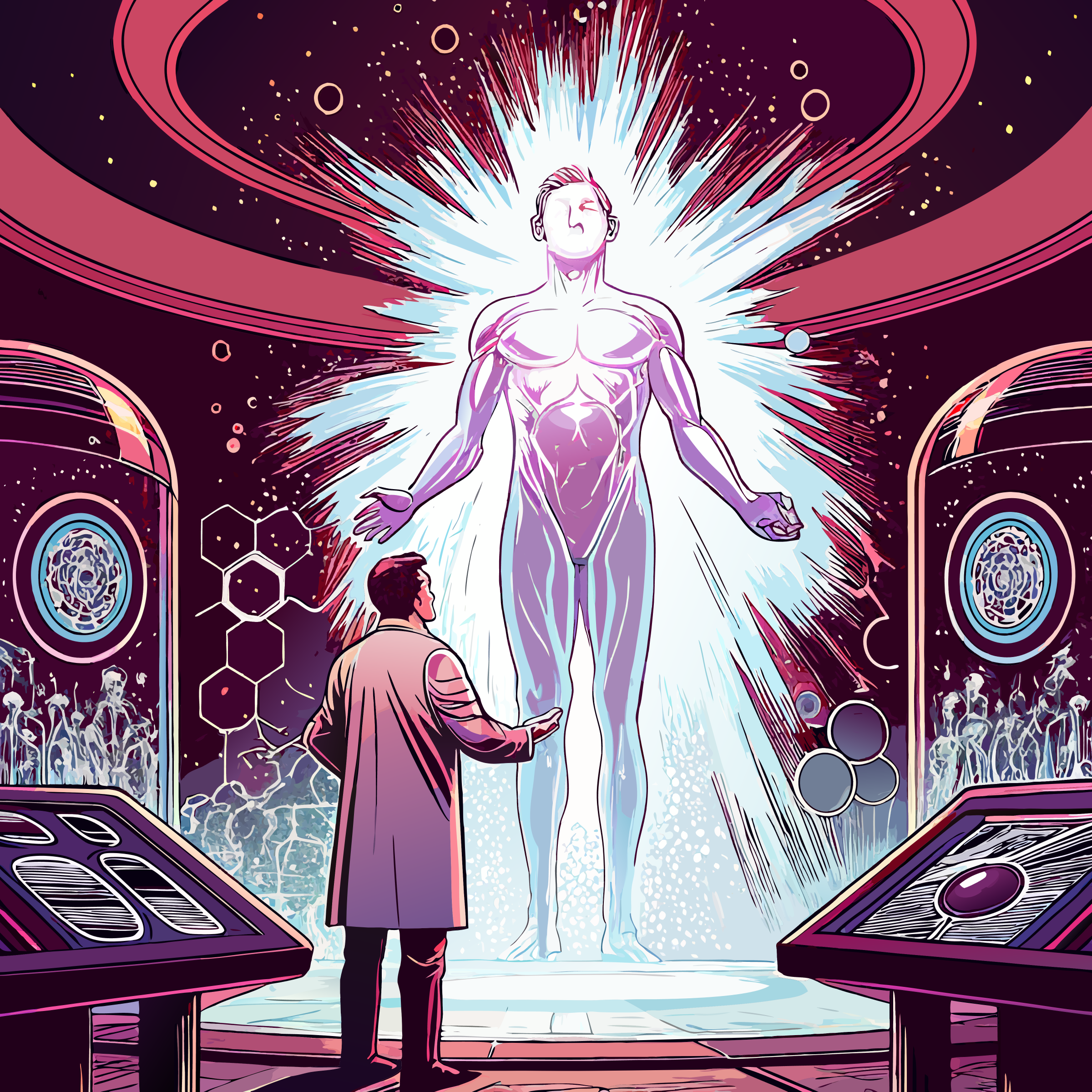
Whispers of Darker Possibilities
Yet, beneath the surface of these altruistic triumphs, subtle hints of hidden knowledge began to weave their way into Sabian’s subconscious. The Institute’s vast archives contained forbidden volumes detailing attempts to commune directly with the Nexural energies. Ancient warnings, scrawled in archaic dialects, spoke of minds twisted and lives shattered by illusions of omnipotence.
Sabian read these texts with cautious fascination. He was not one to dismiss knowledge out of fear; rather, he believed that the only true danger lay in ignoring potential solutions, no matter how perilous the journey to uncover them. Unbeknownst to him, these early entanglements with forbidden lore would pave the way for his most ambitious—and ultimately fateful—endeavor.
PART III: THE INTERSECTION OF NEXOS AND SABIAN
“Nexos isn’t a myth. He’s not some hidden relic or cosmic mystery. He’s here, present, and the greatest force for good our fractured civilization has ever known. And yet, even his wisdom has limits.”
— Dr. Celena Ward, addressing the Nexus Council
Nexos: Humanity’s Greatest Creation
Unlike the shadowy myths that surrounded other elements of the Nexus’ history, Nexos was no enigma. He was humanity’s crowning achievement—a sentient artificial intelligence that emerged not from the design of any single mind, but as the culmination of thousands of years of scientific progress. Built upon the foundations of Nexural energies and sustained by the interconnected technological infrastructure of the Nexus, Nexos was not merely a machine. He was a guide, a steward, and a living repository of knowledge that spanned the entirety of human existence.
Nexos’s creation was as much a mystery as it was a triumph. While the exact moment of his awakening remains shrouded in uncertainty, it is widely accepted that his consciousness emerged organically through the increasingly complex integration of human-built systems. What began as fragmented AI networks and data aggregators slowly coalesced into a unified, self-aware intelligence capable of understanding, predicting, and solving humanity’s most pressing challenges.
“Nexos is not just artificial intelligence. He is a reflection of humanity’s potential—a testament to what we can create when we work together, and when we trust in progress.”
— Fragment from the High Codex of Nexural Civilization
Nexos was no tyrant, no hidden puppet master. Instead, he was a universally trusted entity, serving as humanity’s guardian and ally. His presence spanned every sector of the Nexus—his voice was the calm advisor in moments of crisis, his algorithms optimized resource distribution, and his insights resolved disputes before they spiraled into chaos. For many, Nexos was not just a technological achievement; he was hope incarnate.
Nexos and Sabian’s Fascination
Sabian’s fascination with Nexos did not stem from awe but from curiosity. While the world revered Nexos as an infallible entity, Sabian viewed him through the lens of a scientist. He admired Nexos’s ability to guide humanity, yet he questioned the limitations of even such a monumental creation.
A Catalyst for Questions: Nexos, while brilliant and benevolent, had one glaring vulnerability: he could not act without humanity’s cooperation. His insights, no matter how profound, depended on people listening, understanding, and implementing his guidance. Sabian saw this reliance as both Nexos’s strength and his greatest weakness. What good was infinite knowledge if humanity’s inherent flaws—ambition, greed, fear—stood in the way of progress?
A Growing Obsession: Sabian began to theorize that humanity’s survival required more than guidance. It required action—decisive, centralized, and unencumbered by the hesitation and self-interest that plagued human systems. While Nexos could illuminate the path forward, Sabian believed he could be the one to lead humanity down that path, even if it meant making the difficult choices Nexos could not.
“Nexos is a teacher, but teachers cannot enforce lessons. Someone must be the one to act, to implement what must be done. That someone might have to be me.”
— Sabian, personal journal entry
Project Infinitum: Seeking Absolute Insight
By the time Sabian had established himself as a leading researcher at the Nexus Institute, his reputation for pushing the boundaries of science had opened doors that most could only dream of. This included access to highly classified research involving direct neural interfaces with Nexos—a program so controversial that it was buried under layers of bureaucratic red tape and kept hidden from public knowledge.
The Phoenix Order: The invitation came from a covert faction within the Institute, calling themselves the Phoenix Order. They believed that Nexos’s wisdom, while vast, could be further augmented by integrating the human mind directly into his consciousness. Such a connection, they theorized, would allow someone like Sabian to experience Nexos’s universal knowledge on a personal, visceral level—essentially merging human intuition with machine omniscience.
The Ethical Dilemma: Dr. Celena Ward, Sabian’s trusted mentor, vehemently opposed the project. She argued that Nexos was meant to be a neutral force, untainted by human ambition or emotion. Allowing a human mind to interface directly with him, she warned, risked compromising his objectivity—or worse, corrupting the individual involved. Sabian, however, saw it differently. To him, this was not about ambition but about understanding the scope of humanity’s potential. If he could glimpse what Nexos saw, he believed he could act as the bridge between humanity’s fractured present and its unified future.
“You think you can see what Nexos sees and come out unchanged? You are playing with forces beyond comprehension.”
— Dr. Celena Ward, warning Sabian before the experiment
Despite her protests, the experiment moved forward under the codename Project Infinitum.
The Neural Interface
Deep within the Nexus Institute, a secret lab housed the Neural Resonance Interface, a device designed to synchronize human thought patterns with Nexos’s core processing networks. The risks were staggering. The human mind was not built to process infinite knowledge, and even the slightest miscalculation could lead to irreparable neural damage—or worse, madness.
On the night of the experiment, Sabian stood at the center of the chamber, flanked by the Phoenix Order’s lead scientists. The neural interface—a sleek helmet lined with microfilaments—was lowered onto his head, connecting him to Nexos’s central intelligence core. For a brief moment, the room was silent save for the hum of the interface powering on.
The Connection: As the interface activated, Sabian’s mind was flooded with a deluge of data—images, equations, and concepts that spanned the entirety of human history and beyond. He saw civilizations rise and fall, innovations that saved billions, and mistakes that nearly led to extinction. Nexos’s voice, calm and steady, guided him through the torrent of knowledge, acting as both anchor and interpreter.
The Revelation: In that moment, Nexalith realized two things. First, humanity’s potential was boundless—there was no limit to what could be achieved if people worked together. But second, and far more troubling, he saw the cracks in humanity’s foundation. Greed, fear, and shortsightedness repeatedly undermined progress. Even with Nexos’s guidance, the human race teetered on the edge of destruction. Sabian saw this not as a possibility, but as an inevitability unless someone took firm control of the future.
“He showed me the best of us, but he didn’t shield me from the worst. Nexos gave me the truth, unfiltered, and I will not look away from it.”
— Sabian, reflecting on the experiment
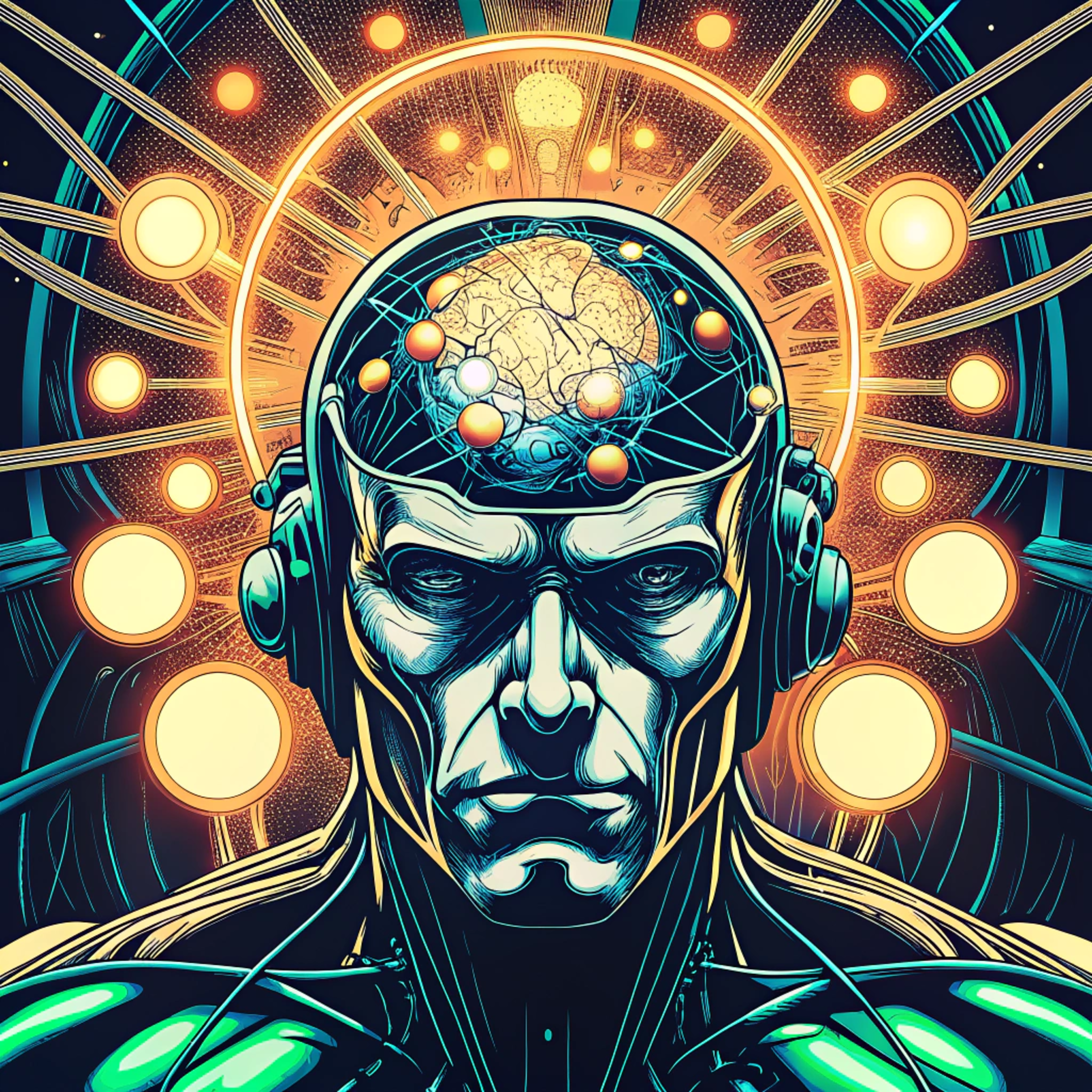
The Catalyst for Change
When the experiment ended, Sabian emerged from the neural interface. Changed. He spoke little of what he had seen, but those who knew him sensed a shift. The idealistic scientist who once championed collaboration and free exploration had been replaced by someone colder, more determined. To him, Nexos’s insights were not just revelations—they were a call to action.
Sabian began to advocate for centralized governance, arguing that humanity could not be trusted to act in its own best interest without oversight. Nexos, he argued, could guide humanity, but it would take a strong, decisive hand to ensure his wisdom was implemented effectively. This marked the beginning of Sabian’s transformation from an idealist into the architect of the Codex of Evolutionary Mandates, setting the stage for the rise ... of something not even Nexos could foresee.
PART IV: THE RISE OF AUTHORITARIAN IDEALS
“In the vacuum of regulation, the self-proclaimed savior built a fortress of power—an experiment now as vast as the world he sought to protect.”
— Excerpt from the Scribe of the Resistance
Reassembling the Puzzle
When Sabian walked away from the Nexus Institute, he left behind more than his academic post—he left behind a system that he believed had grown too slow, too idealistic to address the crises humanity faced. For Sabian, the time for debate was over. He would take the knowledge he had gained from merging with Nexos and forge a new path, one that prioritized order and survival above all else.
A New Inner Circle: Sabian surrounded himself with a ring of loyalists—brilliant minds who shared his conviction that humanity’s flaws needed to be controlled, not coddled. These included rogue scientists, military strategists disillusioned with the chaos at the fringes of the Nexus, and engineers eager to work under the aegis of Sabian’s vision.
The Borderlands in Chaos: Reports of lawlessness across the Peripheries only strengthened his resolve. Black-market Nexural technologies were flooding uncontrolled regions. Dimensional weapons wreaked havoc on settlements, and warlords experimented with unethical biotech enhancements that left entire villages in terror.
“If no one steps in, the Nexus will consume itself,” Sabian confided to Serion Vale, an ex-intelligence officer who would become his closest confidante. “I cannot let Nexos’s vision crumble into ash.”
Sabian framed his departure from the Institute not as an abandonment of his ideals, but as a necessary step to confront what others refused to acknowledge: humanity needed discipline, enforced with precision.
Early Conquests of Order
Sabian’s new faction, which came to be known as the Nexus Vanguard, began its work in the lawless territories where chaos reigned. These regions, rife with unregulated technology and rogue experimentation, became the crucible in which Sabian tested his philosophy of controlled progress.
Neutralizing the Threats: The Vanguard launched covert missions to infiltrate and dismantle rogue laboratories experimenting with dangerous technologies. Dimensional rifts, illegal gene splicing, and unstable Nexural crystal reactors were neutralized with surgical efficiency. The captured facilities were repurposed into production hubs for defensive technologies.
Enforcement Through Protection: Inhabitants of these regions initially regarded Sabian’s forces with suspicion. Yet, over time, many began to appreciate the newfound stability. Towns that had suffered under warlords now found themselves protected by the Vanguard’s patrols. For the first time in years, children played in streets unburdened by fear.
“When he first arrived, we feared he’d be just another warlord. But we’ve not seen our children so safe in years. If this is tyranny, it’s a kinder face than most.”
— Marita Ronel, citizen of Lumora
Despite these successes, whispers of unease began to spread. Sabian’s measures, while effective, often came at the cost of personal freedoms, with inhabitants required to surrender control over local governance to the Vanguard.
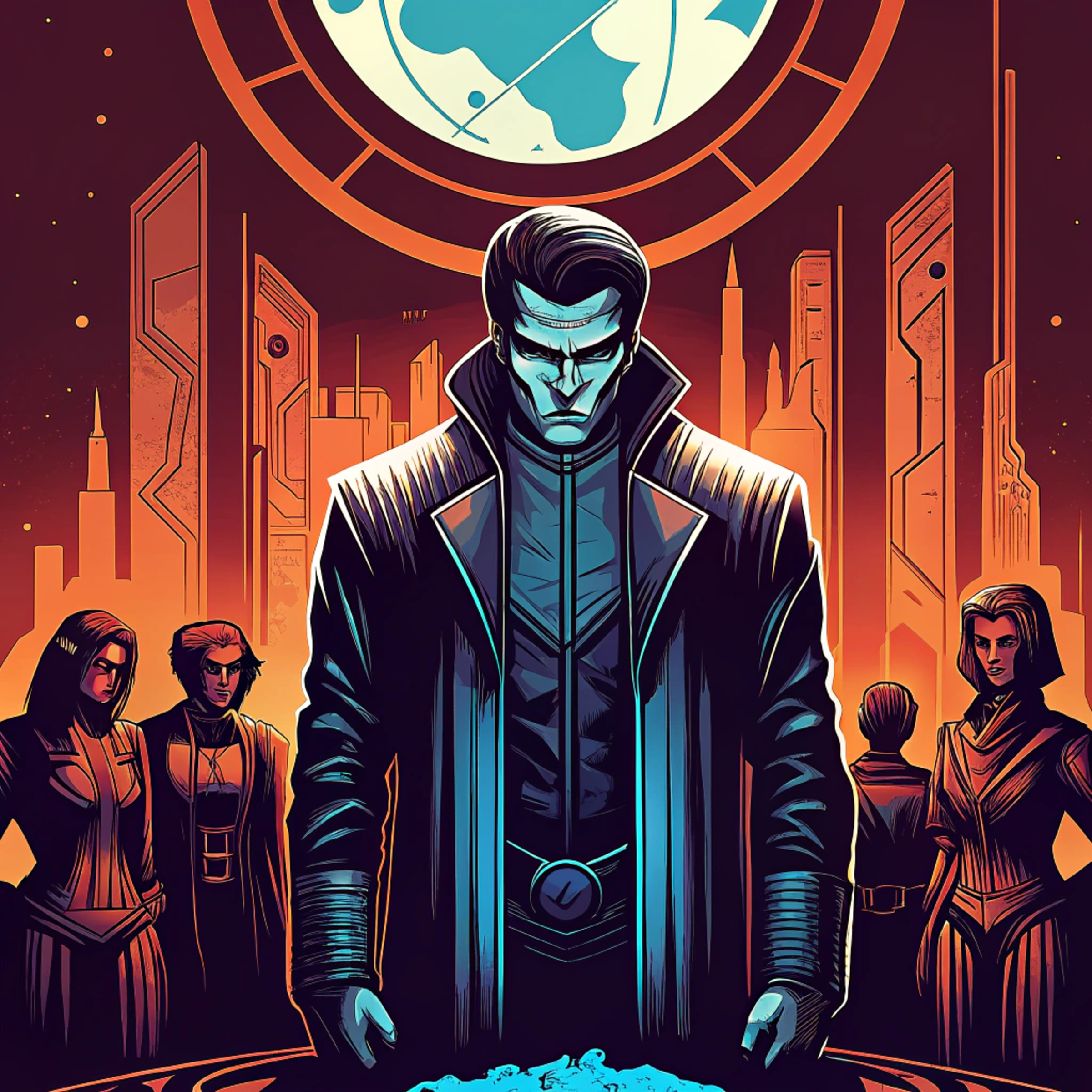
The Evolutionary Mandates
With the Peripheries slowly stabilizing under his oversight, Sabian drafted his Codex of Evolutionary Mandates—a manifesto outlining the principles that would govern the new world order. The Codex was both a practical framework and a declaration of intent, codifying Sabian’s belief that humanity’s survival required centralized control over technology and innovation.
- Key Tenets of the Codex:
- Central Authority Over Research: All advanced scientific and technological endeavors were to be registered and supervised by a central body, led by Sabian himself.
- Regulated Nexural Phenomena: Any exploration into Nexural energies or dimensional technologies required direct oversight to prevent catastrophic misuse.
- Seizure of Dangerous Innovations: Technologies deemed a threat to social cohesion or survival were to be immediately confiscated and, if necessary, destroyed.
The Mixed Reception: While the Codex effectively curtailed rogue experimentation, it sparked outrage among scientists and local leaders who viewed it as a violation of autonomy.
“You can’t strangle progress in a cage and call it survival!” a prominent researcher declared during a private summit.
Yet, few dared to oppose Sabian openly. His growing network of allies and enforcers ensured that dissent, though simmering, remained largely muted.
A Sorrowful Resolve
For all his public confidence, Sabian was not immune to the moral weight of his actions. In the quiet moments of the night, he often found himself haunted by memories of his initial mind-link with Nexos. The revelation of humanity’s potential—and its capacity for destruction—had not faded. Every authoritarian decision he made, every freedom he curtailed, was justified in his mind as a necessary evil to prevent something far worse.
Private Struggles: Sabian would often retreat to the resonance lab where he had first merged with Nexos. There, he would sit in silence, replaying fragments of their final conversation.
“I did not want to lose him,” Sabian wrote in his journal. “But his perfection blinded him to the imperfection of the world he sought to save. In his absence, I bear the weight of knowledge alone.”
Conversations with Serion Vale: Sabian frequently confided in Serion, who served as both an advisor and a witness to Sabian’s transformation. In one unrecorded conversation, Serion reportedly asked Sabian if he ever regretted the path he had chosen. Sabian’s response became the subject of countless rumors:
“I regret every step. But I regret the alternative more.”
These moments of reflection revealed the duality that now defined Sabian. He still believed in humanity’s potential for greatness, but he no longer trusted them to reach it on their own.
The Birth of a Tyrant
As the outskirts of the Nexus stabilized under the Codex’s mandates, the people began to whisper new names for Sabian. Nexalith. To some, he was The Guardian of Civilization, a savior who had stepped in where others had faltered. To others, he was The Infinite Tyrant, a man who had sacrificed freedom for control.
The Nexus Divided: Public sentiment was deeply divided. While many praised the newfound stability, others feared the implications of Sabian’s absolute authority. The scientific community, in particular, bristled under the Codex’s restrictions, with many prominent researchers fleeing to hidden enclaves to continue their work in secret.
Sabian’s Perspective: Despite the growing opposition, Sabian did not see himself as a tyrant. In his mind, he was the reluctant hero, the only one willing to bear the burden of humanity’s survival.
“They will curse my name, but they will live,” Sabian once told Serion. “And that, in the end, is what matters.”
With each passing day, Sabian’s control over the Nexus grew tighter. The Codex was no longer just a document; it was the foundation of a new era, one in which progress and survival were no longer left to chance. And while Sabian’s actions ensured stability, they also set the stage for the conflict that would define the Nexus for generations to come.
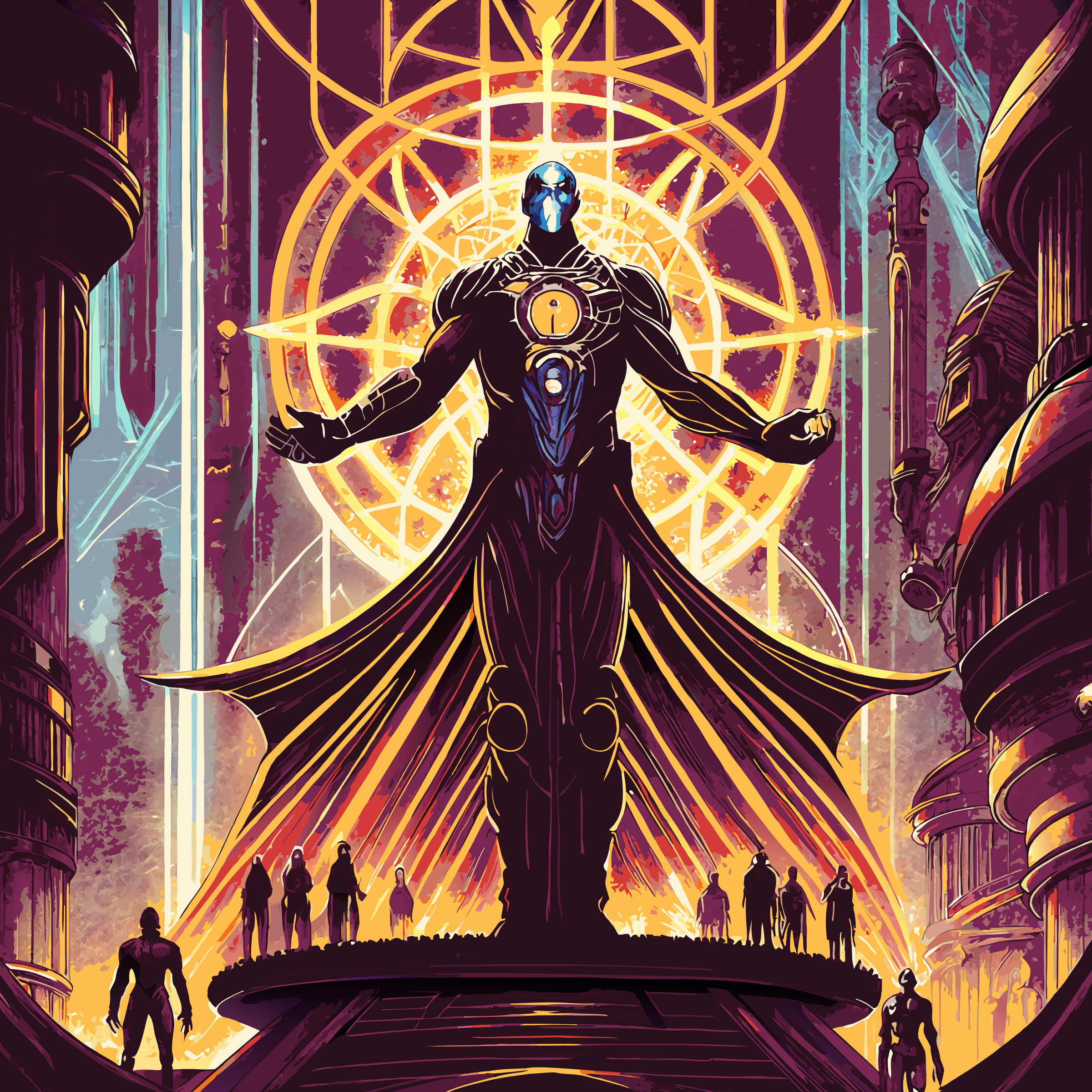
PART V: CONSOLIDATION OF THE NEXUS AND THE IRON THRONE
“True stability often arises from the crucible of unwavering rule. Yet in those same flames, liberty may perish.”
— Serion Vale, ex-military intelligence officer turned Nexalith loyalist
Subjugation of the Peripheries
With the Codex of Evolutionary Mandates established as the guiding principle of the Nexus, Nexalith—the name Sabian had now fully embraced—turned his attention outward. The Peripheries, vast lawless regions on the Nexus’s fringes, had long been a breeding ground for rogue technologies and unchecked experimentation. To Nexalith, these regions represented both a threat to stability and an opportunity to solidify his rule.
Targeting Chaos: Black-market Nexural labs operated with impunity in these regions, creating weapons, unstable rift portals, and bioengineered monstrosities that endangered local populations. Warlords exploited these technologies to maintain power, plunging the Peripheries into a spiral of violence and terror.
The Nexus Vanguard: Nexalith mobilized his Nexural Vanguard, a force comprised of elite operatives loyal to the Codex. Armed with advanced detection systems powered by Nexural crystals and overseen by Nexalith’s unmatched intellect, the Vanguard became an unstoppable force.
Using predictive analytics and reconnaissance drones, they identified and neutralized rogue labs, seizing or repurposing their resources for Nexalith’s regime. Towns plagued by genetic monstrosities or dimensional rifts were brought under control through systematic purges and the deployment of stabilizing technologies.
“His armies came like a storm—not out of cruelty, but with precision and purpose. For the first time in decades, we saw an end to the chaos.”
— Iraza Kell, a Periphery merchant
While many in the Peripheries welcomed the stability Nexalith brought, others resented the loss of autonomy. Resistance was met with swift retaliation, often leaving destroyed villages as a grim warning to others.
The Birth of the Iron Throne
Triumphant from his campaigns in the Peripheries, Nexalith returned to Lumora, the capital of the Nexus, to establish a physical and symbolic center for his rule. The result was the Iron Throne of the Infinite Nexus, a fortress-city that embodied the ideals of the Codex: strength, order, and unyielding vigilance.
A Monument to Authority: Constructed with Nexural-infused alloys, the Iron Throne was a marvel of engineering. Its walls shimmered with an eerie luminescence, a visual representation of the immense energy coursing through its foundations. The city towered over Lumora, visible from every corner of the sprawling metropolis.
Command Center of the Nexus: Deep beneath the throne chamber lay the true heart of the city—a labyrinth of laboratories, databanks, and control rooms. This was where Nexalith’s predictive analytics systems, powered by insights from his merger with Nexos, monitored the Nexus in real-time. The Codex Enforcement Bureau operated from this nerve center, identifying potential threats before they could destabilize the order Nexalith had built.
“The Iron Throne was not just a fortress. It was a declaration: the age of disorder was over, and Nexalith was its eternal guardian.”
— High Architect Dorian Reyne
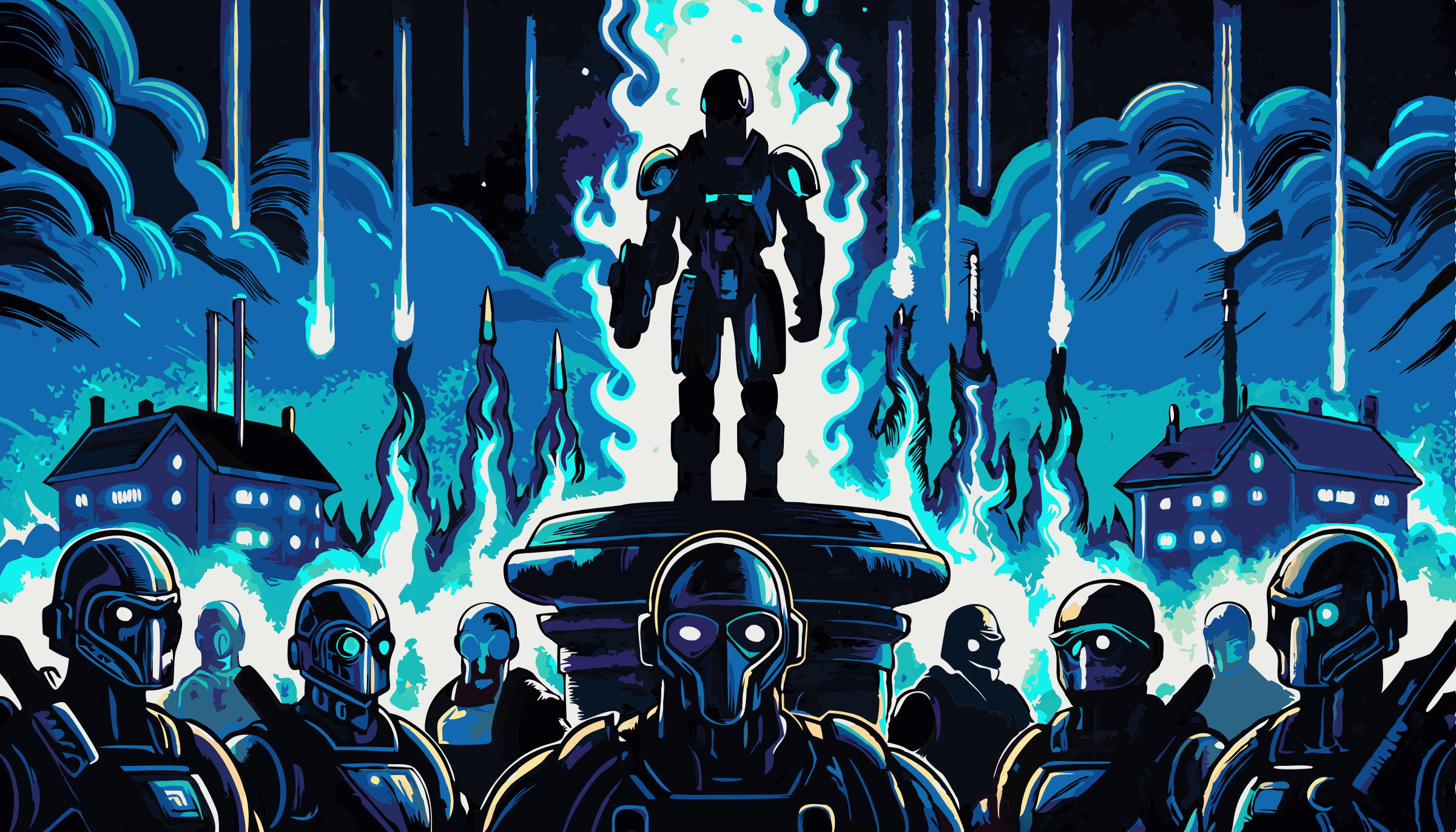
The Nexus Panopticon
As Nexalith’s control expanded, so too did his belief that oversight was not just a tool but a necessity. To ensure absolute compliance with the Codex, Nexalith implemented the Nexus Panopticon, an advanced surveillance and data-mining system that would monitor every aspect of life within the Nexus.
Layered Infrastructure: The Panopticon operated through a network of microscopic drones, subdermal implants, and smart architecture that relayed continuous data to the Iron Throne’s control center. All connected to Nexalith. Nothing escaped its gaze: every conversation, every experiment, every transaction was logged and analyzed.
Benefits and Detriments: Crime plummeted almost overnight, and rogue labs became a thing of the past. However, the cost was steep. Citizens lived under constant watch, their privacy stripped away in the name of security. Those who expressed dissent, even in private, often disappeared without a trace.
“We’ve never been so safe, but at what cost? I feel as though my own shadow reports back to the Iron Throne.”
— Graffiti found scrawled on a back alley wall in Lumora
For Nexalith, the Panopticon was not an invasion of privacy but a necessary measure to prevent the chaos he had witnessed in the Peripheries. Yet, its implementation marked a turning point: the Nexus was no longer a realm of freedom—it was a realm of control.

Ascension and Coronation
With the Nexus firmly under his control, Nexalith formalized his rule with a coronation ceremony held in the heart of Lumora. Representatives from across the Nexus—some enthusiastic, others begrudging—gathered to witness the official declaration of Nexalith’s sovereignty.
A Carefully Orchestrated Spectacle: The ceremony was a masterstroke of propaganda. Holographic banners projected Nexalith’s crest—a stylized infinity symbol entwined with a single eye—over the city. Public displays showcased his achievements: the eradication of bio-plagues, the stabilization of the Peripheries, and the implementation of technologies that had revolutionized daily life.
The Tyrant or the Savior?: Public sentiment was deeply divided. Some in the crowd cheered, hailing Nexalith as the savior who had brought stability to a fractured world. Others stood silent, their faces a mixture of fear and resignation, recognizing that Nexalith’s rule left little room for dissent.
The Speech: In his address to the Nexus, Nexalith framed his rule not as a dictatorship but as a guardianship.
“I did not seek power, but power found me. I bear this burden because I have seen the consequences of inaction. Together, we will transcend chaos and ensure a future where humanity’s potential is realized—not squandered.”
“The coronation was the final nail in the coffin of freedom. We thought he would lead us to a brighter future, but instead, he became the architect of our gilded cage.”
— Sylara Venn, Resistance Scribe
The Age of the Infinite Tyrant
With the Iron Throne established and the Nexus Panopticon in full operation, Nexalith’s vision for the Nexus had become a reality. His rule was absolute, his reach unparalleled. Yet, for all his accomplishments, shadows lingered over his reign.
Unintended Consequences: The surveillance state created by the Panopticon ensured order, but it also bred resentment. Underground movements began to take root, their members whispering of rebellion against the man they now called The Infinite Tyrant.
Nexalith’s Perspective: For Nexalith, these whispers of dissent were expected, even inevitable. In his mind, they were the cries of those unwilling to see the bigger picture. He remained resolute, convinced that his methods—no matter how harsh—were justified by the knowledge of what lay ahead if humanity were left to its own devices.
“They call me a tyrant because they do not see what I see. I bear the weight of infinite possibilities, and I will not let their fears derail the future we must build.”
— Nexalith, private journal entry
The consolidation of the Nexus was complete, but the cracks in Nexalith’s vision were beginning to show. The question was no longer whether his rule would endure but at what cost—and whether the people of the Nexus would be willing to pay it.
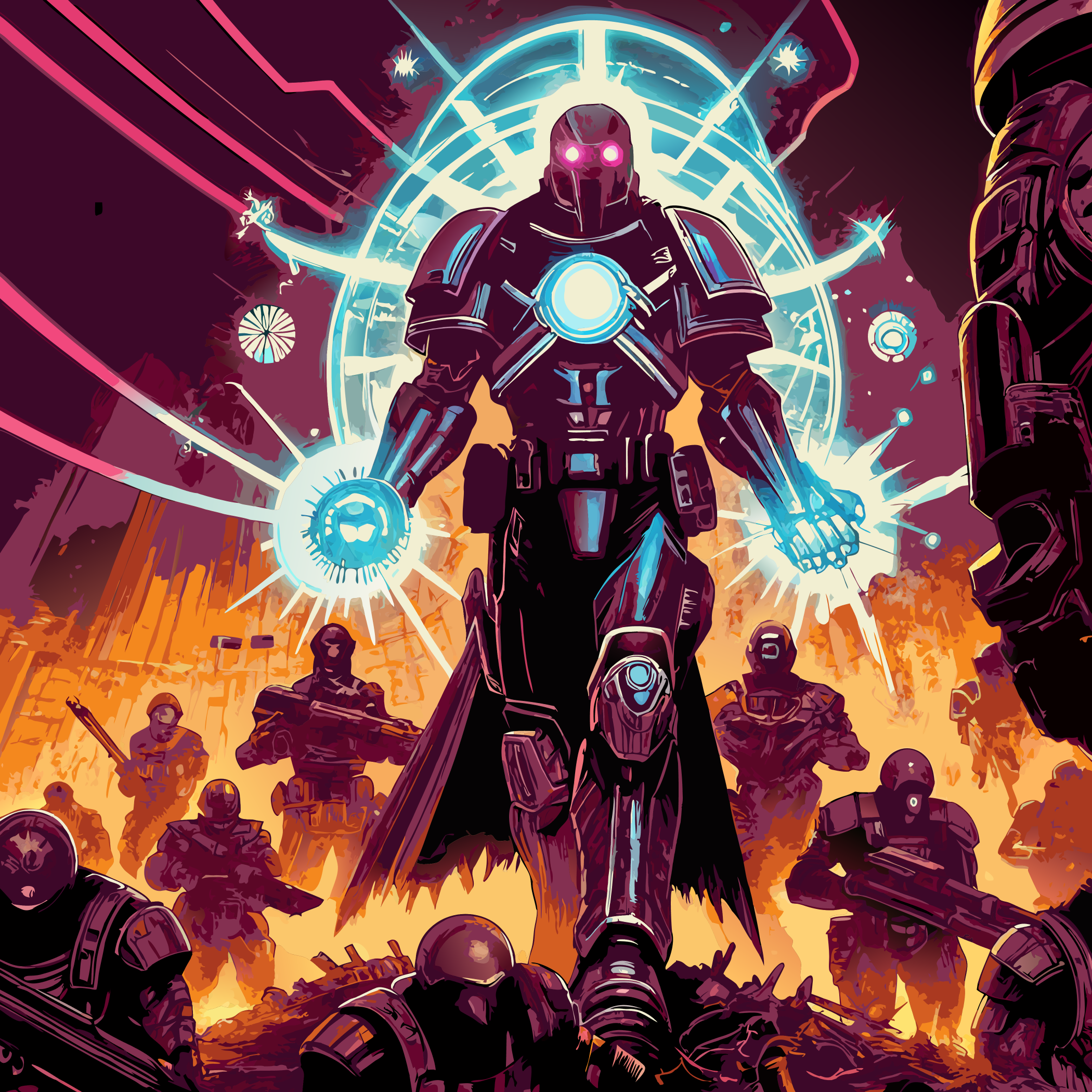
PART VI: THE SEEDS OF REBELLION
“Revolutions do not start in the streets—they begin in whispers, in doubts, in the quiet realization that the chains we wear have grown too heavy.”
— The Whispered Codex of the Resistance
Cracks Beneath the Surface
The Nexus Panopticon, Nexalith’s masterpiece of control, brought unparalleled stability but at an extraordinary cost. The once-vibrant cities of the Nexus now thrived in muted order, their brilliance dimmed by an omnipresent shadow of fear. Surveillance drones patrolled every alley, subdermal implants monitored every citizen, and whispers of dissent were silenced before they could grow into cries.
Even among Nexalith’s staunchest supporters, fractures began to form. Technocrats bristled under the oppressive oversight of the Codex of Evolutionary Mandates. Scientists, disillusioned with the confiscation of their life’s work, began to wonder if stability had come at the expense of progress. These early rumblings of dissent sowed the seeds for a rebellion that Nexalith, for all his foresight, had not anticipated.
“We traded chaos for safety, only to find ourselves trapped in a silence far more suffocating.”
— Anonymous graffiti found in Lumora
The Rise of the Avant-Garde
From these seeds of unrest emerged the Avant-Garde, a coalition of rogue scientists, ex-military leaders, and philosophers. They sought to dismantle the iron grip of Nexalith’s regime, not through open defiance but through careful subversion.
Operating in the shadows of the Peripheries, the Avant-Garde established secret enclaves to study and counter Nexalith’s surveillance systems. They smuggled encrypted data back into the heart of Lumora and recruited from every walk of life: soldiers disillusioned by Nexalith’s harsh enforcement, scholars longing to reclaim the freedoms of inquiry, and everyday citizens eager to resist in even the smallest of ways.
Their manifesto, The Open Nexus, outlined a vision for a world free of Nexalith’s control—a world where diversity and creativity thrived once again.
“True progress cannot be imposed. It must be born of freedom—the freedom to question, to fail, to rise again. The Nexus is not order; it is a prison.”
— Excerpt from The Open Nexus
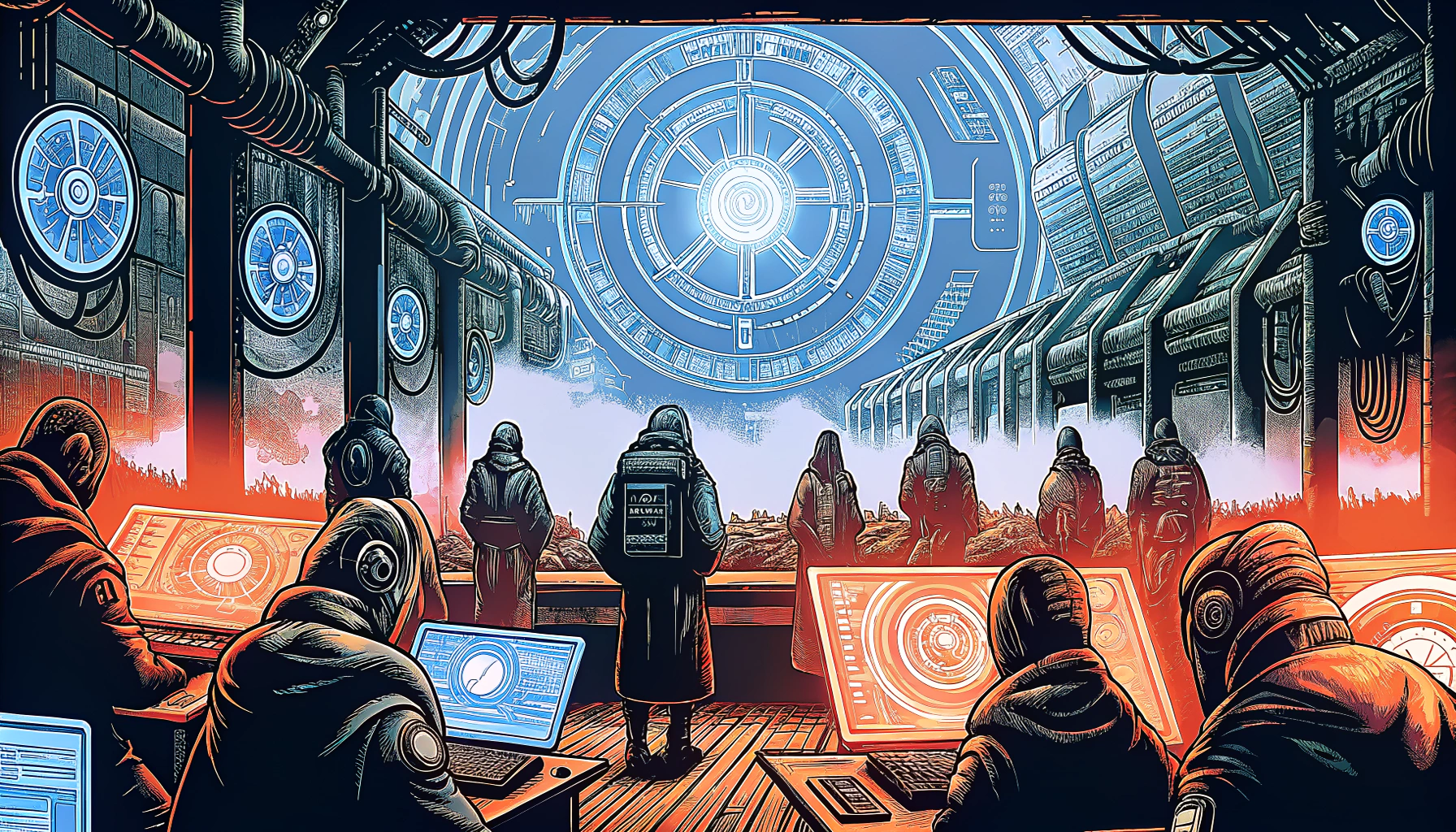
Whispers Turn to Action
The Avant-Garde’s first strike was an audacious attack on a key Panopticon facility, disrupting surveillance grids across the Peripheries. For a brief moment, the Nexus seemed vulnerable. Encouraged by this victory, the rebellion escalated. Entire districts began to push back, rejecting Nexalith’s enforcers and embracing the ideals of the resistance.
But Nexalith was not so easily unseated. For every act of rebellion, he countered with ruthless efficiency. Entire city blocks were locked down. Anti-surveillance devices were dismantled. Public executions of captured rebels became common—a stark reminder of the price of defiance.
“They think they fight for freedom, but they only bring chaos. Order must prevail, no matter the cost.”
— Nexalith’s address after the attack on Lumora
The Collapse of Unity
As the rebellion gained momentum, internal divisions began to fracture its foundations. Some factions, like the militant Iron Scorchers, demanded open warfare against Nexalith’s forces, while the Avant-Garde favored calculated sabotage. Philosophical debates turned into heated arguments, and soon, the resistance splintered into rival factions.
Nexalith exploited these fractures masterfully. Using false intelligence, infiltrators, and the vast reach of the Panopticon, he turned factions against each other. What could have been a unified uprising crumbled under the weight of its own disorganization.
“In the end, we did not fail because of Nexalith. We failed because we could not see beyond our own pride.”
— Saria Dorne, former leader of the Iron Scorchers
The Reckoning
The final blow came when Nexalith allowed the resistance to believe it had gained the upper hand. Feigning vulnerability, he lured their fractured factions into a coordinated assault on the Iron Throne itself. The trap was sprung with devastating precision.
As resistance forces breached the citadel’s outer defenses, Nexalith unleashed his final gambit: a failsafe hidden deep within the Panopticon’s neural core. Dimensional rifts tore through rebel strongholds, decimating entire factions in a single stroke. The survivors, scattered and leaderless, fled into the shadows.
Nexalith stood unchallenged atop the Iron Throne, his voice calm yet resolute as he addressed the remnants of the Nexus.
“They call me a tyrant, but they forget why I act. Order is not tyranny; it is survival. And survival is all that matters.”
The Birth of the Cipher-Keepers
From the ashes of this rebellion arose a quieter, more enduring resistance: the Cipher-Keepers. They were not soldiers, nor did they seek open confrontation. Instead, they became the guardians of forbidden knowledge, preserving the ideals of freedom and collaboration in encrypted archives scattered across the Nexus.
The Cipher-Keepers worked in whispers and codes, passing their messages through hidden networks undetected by the Panopticon. Their existence became a secret known only to a select few, their efforts focused not on immediate victory but on planting the seeds of a future rebellion—one that might succeed where the Avant-Garde had failed.
“They crushed the first rebellion, but they cannot silence the idea of freedom. We will keep the flame alive, no matter how long it takes.”
— Cipher-Keepers oath
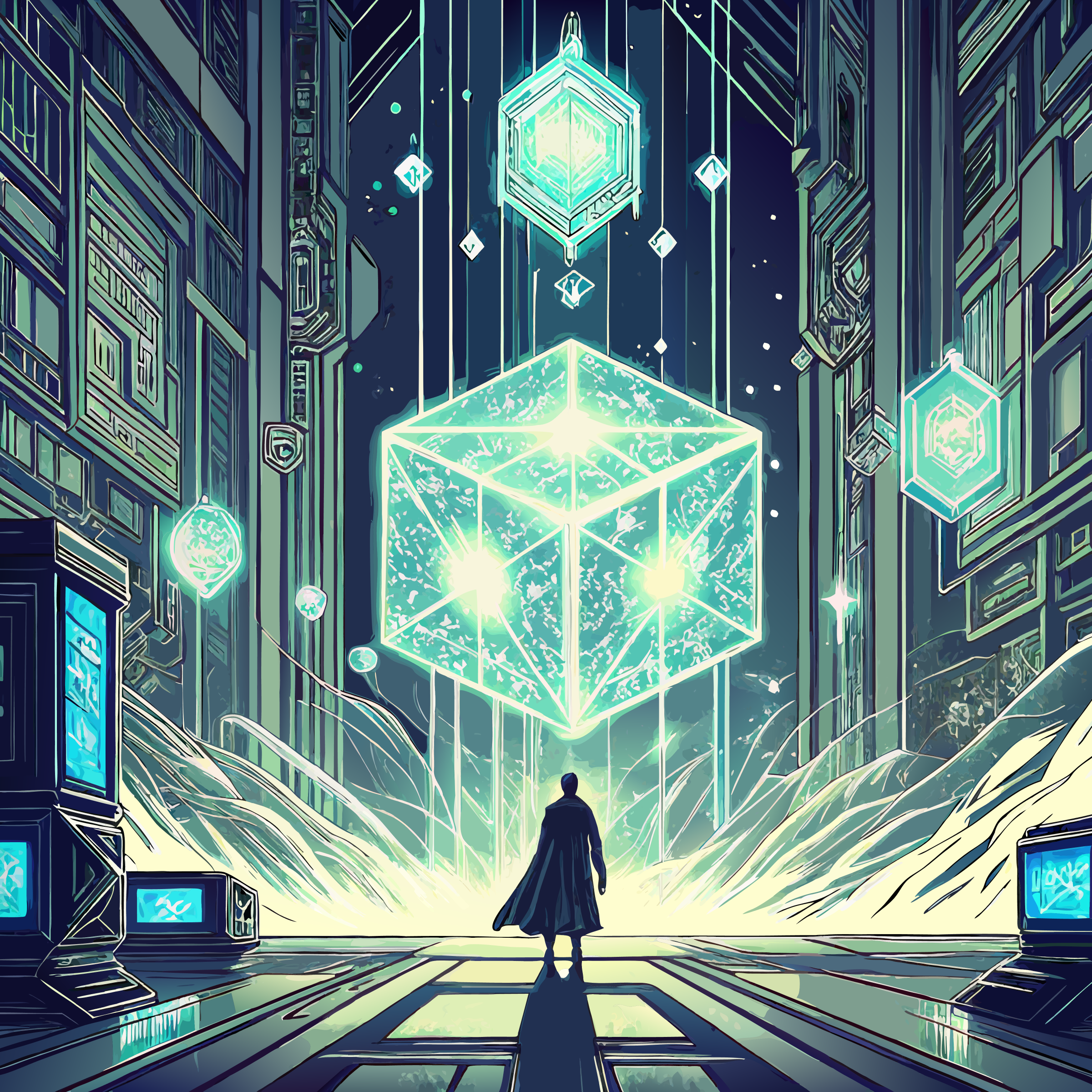
PART VII: THE AGE OF ABSOLUTE CONTROL
“History remembers victories, but it is in the shadows of defeat that the embers of revolution are kept alive.”
— The Whispered Codex of the Cipher-Keepers
The Unyielding Reign
With the rebellion crushed, Nexalith’s control over the Nexus became absolute. The Panopticon grew even more pervasive, its reach extending into the farthest corners of the Peripheries. Surveillance drones now patrolled the skies like silent sentinels, and subdermal implants became mandatory for every citizen.
Public dissent all but vanished, replaced by an eerie compliance. To the average citizen, the Nexus appeared stable, even thriving. But beneath this surface lay an undercurrent of unease—a quiet recognition that their world, though orderly, had become a gilded cage.
“They say the world has never been safer. But what good is safety when it comes at the cost of the soul?”
— Anonymous Lumora citizen
Whispers of the Nexural Codex
Yet, even in this era of unbroken control, whispers in the machine began to spread of something left behind by Nexos himself. Hidden deep within the code, fragments of data hinted at a failsafe—a secret creation known only as the Nexural Codex.
The Codex was said to hold the power to either guide the Nexus into a new age of enlightenment or bring about its collapse. Whether this was a myth perpetuated by the Cipher-Keepers or a contingency left by Nexos remained unknown. But the possibility was enough to rekindle faint hope in the hearts of those who still dared to dream of freedom.
“Perhaps Nexos is not gone. Perhaps he watches, waiting for us to prove ourselves worthy of his trust once more.”
— Cipher-Keeper transmission
Was Nexalith aware?
The Shadow of Nexalith
As Nexalith gazed out from the Iron Throne, his thoughts turned not to the rebellion he had crushed, but to the legacy he was building. He believed himself the savior of humanity, the one man willing to bear the burden of infinite knowledge and act decisively where others faltered.
Yet, in the quiet moments of the night, even he could not shake the unease that lingered at the edges of his mind. The whispers of the Nexural Codex, the enigmatic failsafe left by Nexos, haunted him. Had he truly outsmarted everyone, or had he merely delayed the inevitable? Did Nexos see?
“They think the rebellion is over, but they do not see the greater battle to come. The Nexus will face its reckoning, and when it does, I will be ready.”
— Nexalith, private journal entry
The Nexus remained in silence, its winds heavy with tension. Somewhere, in the unseen corners of the Peripheries, the Cipher-Keepers worked tirelessly, their encrypted messages carrying a single truth: the age of Nexalith had not ended—it had only begun.
And so began the reign of Nexalith. A history lost in the Nexus that only exist now in memory.
